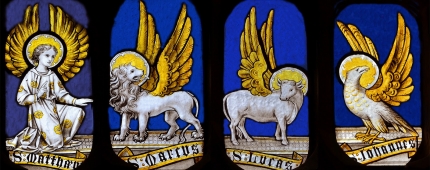John 7:53–8:11—Why do some scholars question whether this story should be in the Bible?
Problem: This story of the woman taken in adultery is found in the kjv, the asv, the nasb, and the niv. However, the NEB places it at the end of the Gospel under the caption “An incident in the temple.” And since 1971 the rsv places it in special print set off from the rest of the text, as does the nrsv. The standard Greek NT (Nestle-Aland Text, United Bible Societies) places brackets around it, indicating that it is not part of the text of John. Why do many scholars believe this story is not part of the original manuscript of the Gospel of John?
Solution: There are several reasons why many scholars question whether this passage belongs here in John’s Gospel. (1) The passage does not appear in the oldest and most reliable Greek manuscripts. (2) It is not found in the best manuscripts of the earliest translations of the Bible into Old Syriac, Coptic, Gothic, and Old Latin. (3) No Greek writer commented on this passage for the first 11 centuries of Christianity. (4) It is not cited by most of the great early church fathers, including Clement, Tertullian, Origen, Cyprian, Cyril, and others. (5) Its style does not fit that of the rest of the Gospel of John. (6) It interrupts the flow of thought in John. John reads better if one goes right from John 7:52 to 8:12. (7) The story has been found in several different places in Bible manuscripts—after John 7:36; after John 21:24; after John 7:44; and after Luke 21:38. (8) Many manuscripts that include it in John 7:53–8:11 have marked it with an obelus, indicating they believe it is doubtful.
In spite of this, many Bible scholars believe this story is authentic. It certainly contains no doctrinal error and fits with the character of Jesus and His teaching, but there is no certainty that it was in the original text of John.
See All Problems
This excerpt is from When Critics Ask: A Popular Handbook on Bible Difficulties (Wheaton, Ill.: Victor Books, 1992). © 2014 Norman Geisler and Thomas Howe. All rights reserved. Used by permission. Click here to purchase this book.














